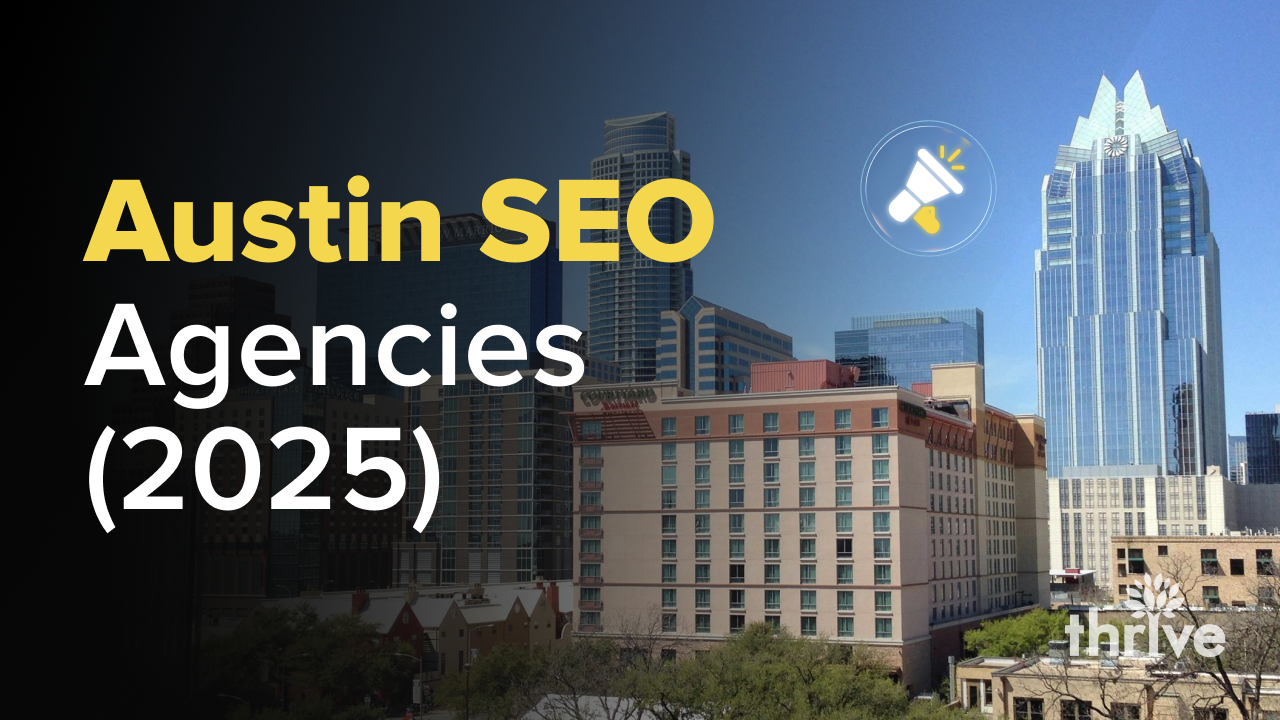As search algorithms have grown more sophisticated and user behavior has evolved, achieving top rankings in search engine results pages (SERPs) through manual optimization has become increasingly challenging. The solution – programmatic search engine optimization (SEO).
Programmatic SEO combines machine learning, automation tools and analytics to optimize websites. It helps increase organic search traffic by using data-driven insights to identify and repair SEO roadblocks, propelling sites ahead of competitors in search engine results.
In this article, we’ll cover:
• What Is Programmatic SEO?
• Benefits of Programmatic SEO
• Programmatic SEO Examples To Take Inspiration From
• How To Create Programmatic SEO Pages
• The Drawbacks of Programmatic SEO
• Why Technical SEO Services Are Vital for Your Business
What Is Programmatic SEO?
Before defining programmatic search engine optimization, let’s first define “standard” SEO. Search engine optimization (SEO) is a marketing technique that helps to make your website more visible on search engines like Google, Bing and Yahoo.
It includes optimizing your site’s content for keywords related to your product or service offering and off-site activities such as link building and social media engagement.
Defining Programmatic SEO
Programmatic search engine optimization takes a more innovative approach. Unlike traditional SEO, which involves manual content creation, programmatic SEO tools utilize data and automation to generate pages instantly – to rank high on Google.
You can instruct the program to generate multiple landing pages targeting specific keywords or variations you feed the system. This targeted approach ensures potential customers find relevant content based on their search queries.
Benefits of Programmatic SEO
Programmatic SEO allows your organization to stay competitive in the digital landscape. It improves the chances of potential buyers discovering your brand by boosting your website’s rankings in search engine result pages (SERPs).
No more relying on guesswork in the optimization process. Programmatic SEO provides precise control over your website and its content, allowing you to tailor it to different audiences or regions.
Some notable benefits of programmatic SEO include:
• Rapidly scale and automate time-consuming tasks such as updating webpages according to changes in algorithms.
• Track, monitor and analyze data to gain valuable insights into the performance of your website.
• Respond quickly to changes in market trends.
• Generate targeted content for specific keywords or variations.
• Build valuable links to boost SEO score.
• Analyze and monitor your competition’s performance on search engines.
Best of all, programmatic SEO tools are cost-effective and require minimal human intervention, so you can save time and resources that would otherwise be spent on manual tasks.
If you don’t have access to programmatic SEO tools or services yet still want to reap the rewards of SEO, you may want to consider partnering with a technical SEO agency. They can identify opportunities where automation saves time without compromising quality or performance.
Programmatic SEO Examples To Take Inspiration From
There are loads of programmatic SEO examples for you to learn from, but here are our personal favorites:
Zapier
Zapier’s programmatic SEO strategy has played a key role in its success, allowing it to scale and generate revenue from organic traffic. By creating individual programmatic SEO pages for each supported app, Zapier effectively targets users’ specific needs.
For example, if you’re looking for Google Sheets integrations, a quick search for “google sheets integrations” on Google will likely show Zapier as one of the top-ranked options.
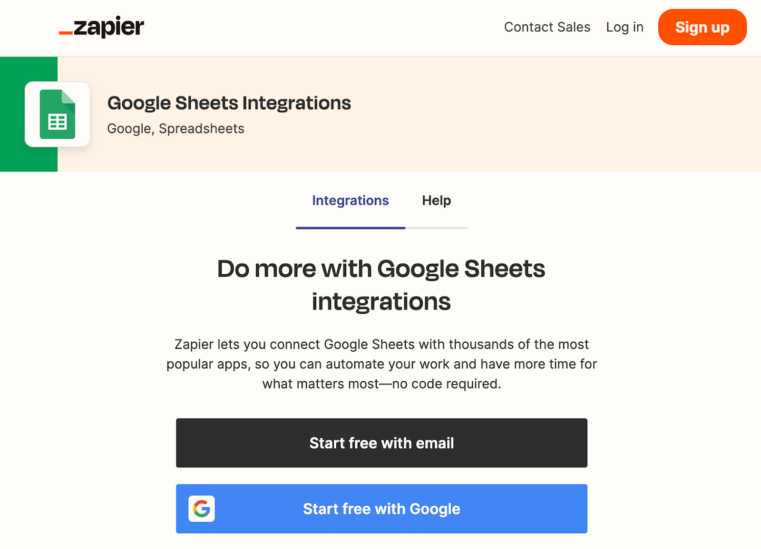
The page showcases the possible integrations with Google Sheets using Zapier.
Moreover, Zapier’s database-driven pages allow deeper exploration, with dedicated pages for specific integrations. For instance, if you want to integrate Google Sheets with a Notion page you’ve created, simply search for “google sheets and notion integration,” and you’ll find Zapier among the top results (again).
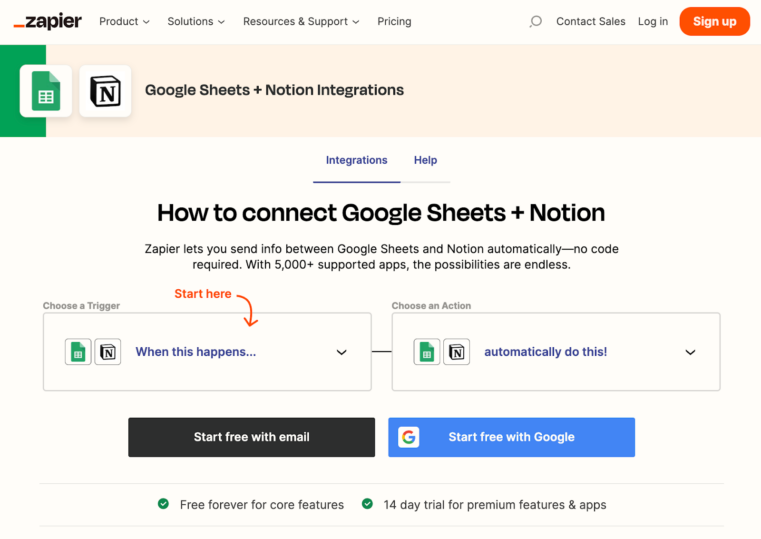
And it doesn’t end there; Zapier offers programmatic pages for various Google Sheets integrations, including Trello, Slack and HubSpot. This is replicated across all Zapier-supported tools, amounting to thousands of programmatic pages.
Tripadvisor
Another good programmatic SEO front-runner is Tripadvisor. If you Google “best things to do in Paris,” you’ll find Trip Advisor at the top, even ahead of official Paris tourism sites.
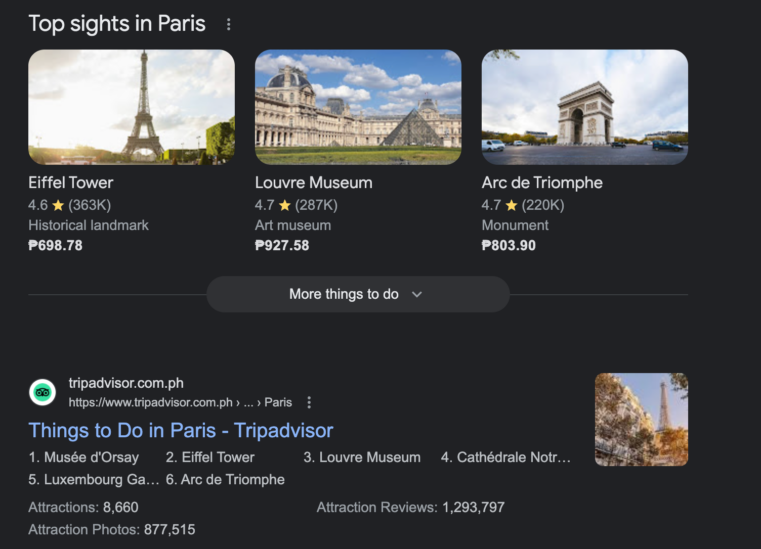
The reason? Trip Advisor has curated pages for each location its visitors search for. Each page includes a comprehensive list of attractions and activities alongside reviews from past travelers.
Tripadvisor utilizes programmatic SEO tools to generate thousands of city-specific variations of a single template page, ensuring high visibility in search results for “best things to do in {city}.” This has propelled Tripadvisor to consistently rank near the top for almost any search query, cementing its reputation as a go-to platform for travel recommendations.
How To Create Programmatic SEO Pages
Here’s an overview of implementing a programmatic SEO strategy to increase organic search traffic and boost rankings for your eCommerce business:
Step 1: Keyword Research
Kicking off a programmatic SEO campaign starts with keyword research. This essential step allows you to identify your business’s most relevant and valuable search terms.
You can do this by conducting competitor analysis, researching industry trends, reviewing customer feedback or using keyword research tools.
There are different keyword types to target, mainly:
Head Terms/Broad Terms
These are generally short-tail keywords with high search volumes. They often have higher competition and lower conversion rates.
For example, a head keyword for a website such as Tripadvisor could be “hotels” or “things to do.” In the case of Tripadvisor, it could be “vacation packages.”
Modifiers
These are keywords attached to your head terms; they are used to create more specific search queries and often have higher search volumes.
There are two main types of modifiers:
a) Primary Modifiers – create a new category of search terms, such as “Korean restaurant” or “Italian food” for the term “restaurant.”
b) Secondary Modifiers – describe the head term, like “cheap restaurants” or “restaurants near me.”
Long-Tail Keywords
These are longer keywords with lower search volumes but higher conversion rates; these words usually indicate a user is further along in the buyer’s journey. For example, a long tail keyword for Tripadvisor could be “best all-inclusive resorts in Mexico.”
Step 2: Page Template Design
The content template is the most critical aspect of programmatic SEO. It should cater to user search intent, include all your target keywords and provide valuable, relevant content for users. Otherwise, you risk Google not indexing these pages.
You can use a content wireframe to design your page and include all the necessary information. This should consist of headings, hero text, call-to-actions and other relevant text.
You can also upload screenshots of successful sites and brainstorm ways to add your unique touch to the page.
Step 3: Data Collection
Some websites have static content that doesn’t change, while others, like investing sites, require daily updates. It’s essential to avoid creating thin content, so ensure you’ve done thorough research to provide substantial and unique information.
There are different methods for collecting data, including:
• Scraping websites
• Manually collecting private or hard-to-access data
• Manually entering data
• Curating user-generated content (UGC)
Step 4: Building a Database with Content and Labels
Once you have the data, your next step is to compile it into a database and tag it with associated labels. This enables you to determine which content is relevant for each page template.
A tool like Airtable enables you to sort and filter data, so you can easily access the relevant content for each page. This includes metadata like page title, meta description and headings.
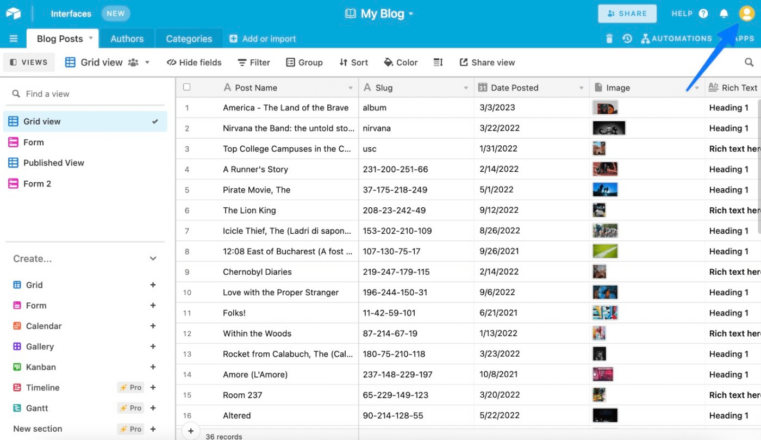
An example of an Airtable database by Whalesynch
Step 5: CMS Collection and Page Template Creation
You can create the pages manually or use a headless content management system (CMS) like Contentful.
Headless CMSs enable you to store all content in a single place, making it easier to update and manage. You can deploy pages faster on any digital channel you prefer.
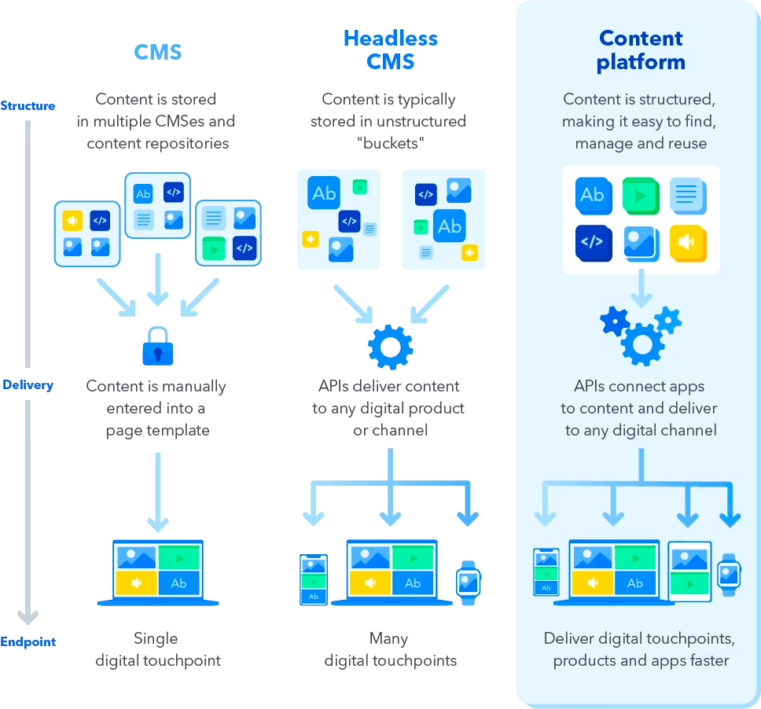
A brief explanation of how headless CMS works by Contentful
Step 6: Database Integration With the Website
Your next step is integrating your database with the website using APIs, webhooks or third-party integration tools like Zapier. These will enable you to dynamically create pages without manually updating each page individually.
Step 7: Crawl and Optimize for SEO
Once your pages are live, the next goal is to get indexed and rank for your target keywords. This includes implementing technical optimizations like page load speed, meta tags and structured data markup.
You can track the performance of each page through Google Search Console or another analytics platform like Ahrefs or Moz.
This helps you identify trends in user behavior, such as click-through rate (CTR) and bounce rate, as well as which pages are achieving a higher ranking in SERPs.
Step 8: Site Testing and Adjustment As Necessary
The last step in implementing a programmatic SEO strategy is regularly reviewing and optimizing content. You can do this manually or by using an AI-driven crawler that identifies and flags any broken links, duplicate pages or missing elements.
By continuously optimizing your website’s content, you can ensure it remains relevant and up-to-date for users — an essential component to achieving organic search success.
The Drawbacks of Programmatic SEO
As with any marketing strategy, programmatic SEO has drawbacks. Some of these include:
• Potential Duplicate Content
Using the same template for your web pages can lead to duplicate content issues. To avoid this, ensure that each page has unique content. Integrating user-generated content, such as reviews or comment sections, can be a great way to achieve this.
• Google Indexing Issues
Google may only index some of your pages due to limited resources, especially if you add a large number of pages quickly.
To speed up indexing, focus on creating a solid site architecture with internal links and building external links. Additionally, you can submit your sitemap or specific URLs to Google through Search Console.
• Google Penalties for Thin or Automatically Generated Content
Google advises against using automatically generated or thin content that solely focuses on keywords without providing value to users.
They take action against domains that display scraped or cookie-cutter pages lacking substantial value.
Prevent this by incorporating user-friendly design, informative charts or graphs and user-generated content.
Partnering with a programmatic SEO agency can help you develop and implement strategies to increase search traffic by leveraging data-driven insights to make decisions about where best to focus your efforts.
Implement a Lucrative Programmatic SEO Campaign With Thrive
Programmatic SEO can be a lucrative strategy for the right business if implemented correctly. It’s a cost-efficient way to scale content production and increase organic search traffic, engagement and leads.
When creating your programmatic SEO plan, focus on the user experience by providing valuable content that helps them solve their query. Additionally, it’s important to perform a technical SEO audit and optimize your pages regularly to enhance user experience further.
For the best results, consider partnering with a programmatic SEO agency. Alternatively, Thrive, a leading technical SEO agency, offers complete technical SEO services, including local SEO. Our experts will perform an in-depth technical SEO audit and develop strategies to increase search traffic.
Contact Thrive today for a free technical SEO audit. Our technical SEO agency will help boost your SEO score and increase search traffic for sustainable growth.



